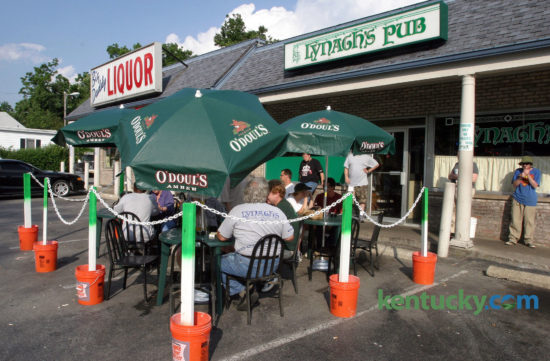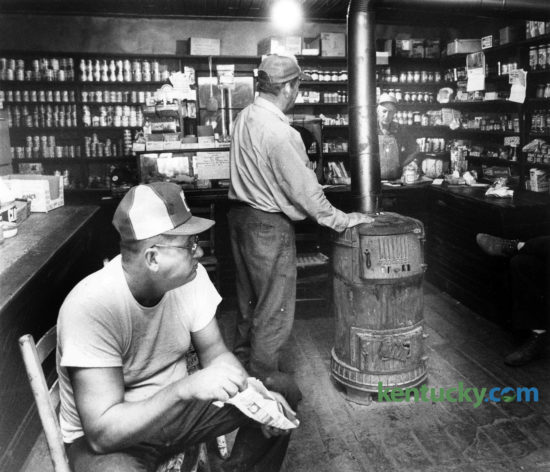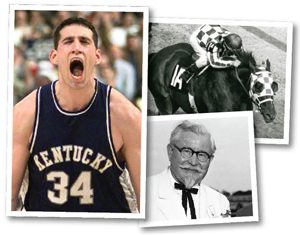October 13, 2025
Star of Lexington, 1992
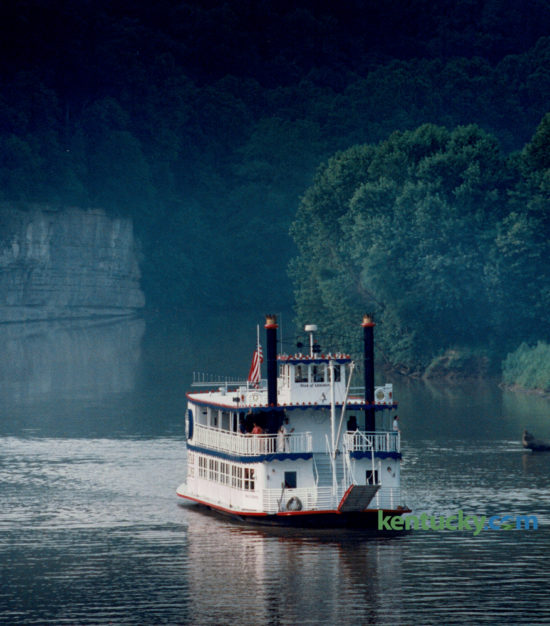
The original paddle-wheeler Star of Lexington made its way up the Kentucky River near Clays Ferry on June 30, 1992. The 125-foot-long vessel, which provided river cruises and dinner, was replaced in March 1993 by a larger boat, 135 feet long and 35 feet wide, with three decks and capacity for 540 passengers. The riverboat was owned by Star Line Corp., which was owned by Lexington developer Dudley Webb and his family. By April 1994, the the decision was made to abandon the business because of the amount of debris that collected around the boat’s dock at Clays Ferry. The smell and the river’s unsightly appearance created an unpleasant dining environment for passengers, according to Frank Mauro, vice president tor operations for Webb Hospitality Group. The last day of operation was April 13, 1994. The Star of Lexington was expected to be moved to another city where the company operated cruise boats. Photo by Tom Marks | Staff
Kentucky Central Insurance building, 1976
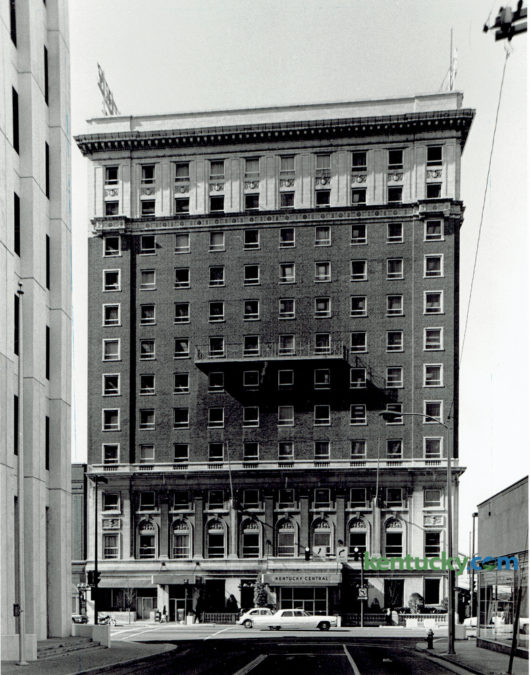
What was then the building that housed Kentucky Central Insurance Co. and is now the home of the Lexington Urban County Government at 200 East Main Street, in July 1976. The 12-story, 300-room building was originally the Lafayette Hotel and had its grand opening on Dec. 2, 1920. The hotel, built to rival the Phoenix Hotel, farther west on Main Street, closed in 1963. At that time, Garvice Kincaid, CEO of Kentucky Central Insurance Co., moved his company into the building. Ashland Oil Co. moved into the building about 1979, when Kentucky Central moved into Kincaid Towers on Vine Street. Then in 1982, the Urban County Government bought the building and moved from the old city hall offices on what was then Walnut Street. Photo by John C. Wyatt | Staff
Last passenger train at Union Station, 1957
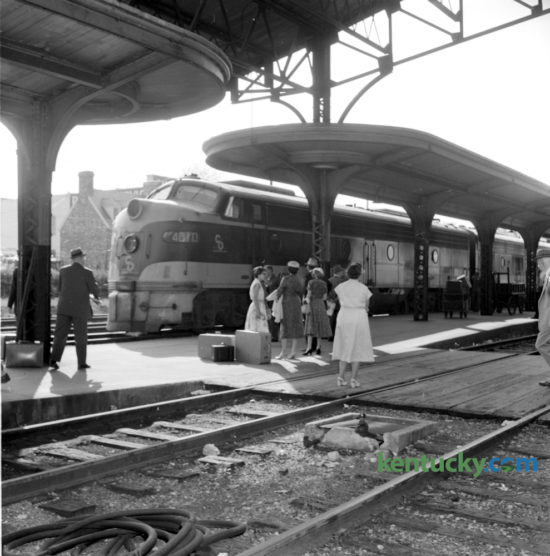
The Chesapeake and Ohio Railroad’s George Washington waited at the platform behind Union Station on May 9, 1957. It was the last time the passenger train would stop at Union Station, which was to be closed because of high operating costs and low passenger levels. The station was demolished in March 1960. When the George Washington was launched 25 years earlier, in 1932, it was one of only two long-distance air-conditioned trains operating in the United States. Click here to see more images from our archives of Union Station. Herald-Leader Archive Photo
Rainbow Family in Pulaski County, 1993
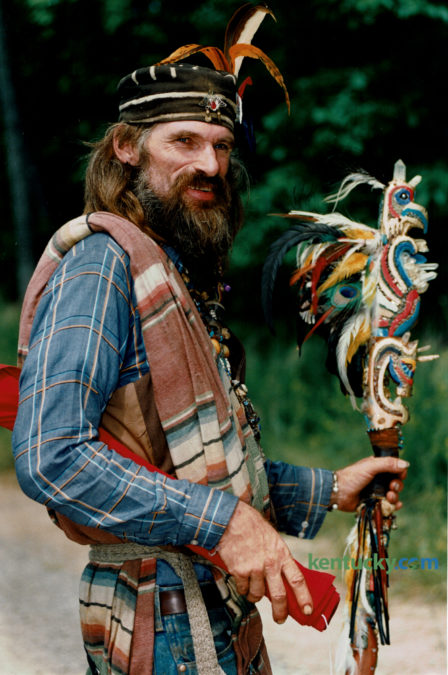
Blackfoot, the shaman for the Rainbow Family of Living Light, at the family’s gathering in eastern Pulaski County on June 16, 1993. Members of the group set up camp in what once was a strip mine, making it ready for the annual gathering, July 1 to 7. The group, grounded in the counterculture hippie values of the late 1960s and early 1970s, espoused peace, equality and environmental awareness. The previous year, the group met in Colorado and was attended by nearly 20,000, but the group split in 1993. Some Rainbows congregated near Mt. Victory, the first national gathering in Kentucky, and many others got together in Talladega National Forest in northeastern Alabama. It was the first split national gathering since the annual Rainbow meeting started in the early 1970s. The gathering in Pulaski County was attended by about 7,700 people, according to the National Forest Service. Photo by Ron Garrison | Staff
Kentucky River Clean Sweep, 1991
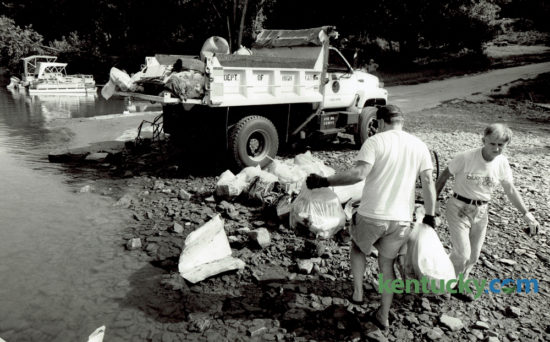
Charlie Milward, left, and Stuart Butler, both of Versailles, hauled trash from a boat to a waiting truck during the Kentucky River Clean Sweep on Sept. 14, 1991. Volunteers gathered along the river in 22 counties to clean up trash. This year’s Kentucky River Clean Sweep is 8:30 a.m. to 1 p.m. Saturday The meeting place is the Clays Ferry boat dock on Old Richmond Road. Photo by Jane Worne | Staff
Harrison County wins state baseball title, 1993
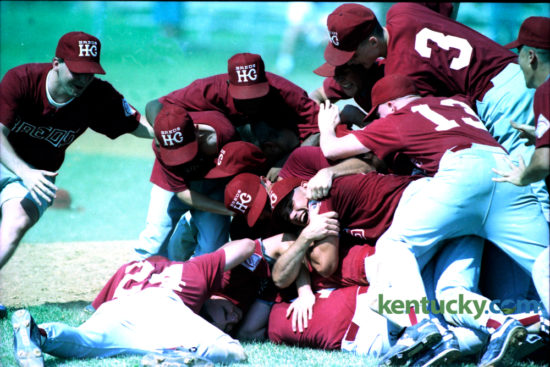
The Harrison County Thorobreds piled up in the infield after blanking error-plagued Pleasure Ridge Park 6-0 to win the 53rd state baseball championship on June 12, 1993, in Owensboro. The 2017 semifinals of the KHSAA State Baseball Tournament get underway at Whitaker Bank Ballpark at 11 a.m., when Simon Kenton takes on Marion County. McCracken County takes on Pleasure Ridge Park at 1:30 p.m. The winners will play for the state championship at 1 p.m. Saturday. Photo by Marvin Hill Jr. | Staff
Financial Center roofers, 1986
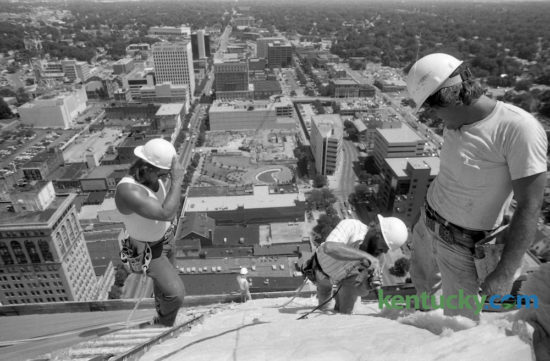
Danny Rhymer, left, and Michael Stanford watched Junior Jones attach a piece of roofing onto the Lexington Financial Center on June 19, 1986. The men worked for W.F. Martin Co. and were installing sheet-metal roofing on the nearly complete building in downtown Lexington. At the center of the photo is what is now Phoenix Park and the site of the Lexington Public Library. The Lexington Financial Center, known as “Fifth Third” or the “Big Blue Building,” is a 410-foot, 31-floor high-rise and was completed in 1987. It’s the tallest building in Kentucky outside Louisville. Photo by Ron Garrison | Staff
Mt. Zion covered bridge, 1985
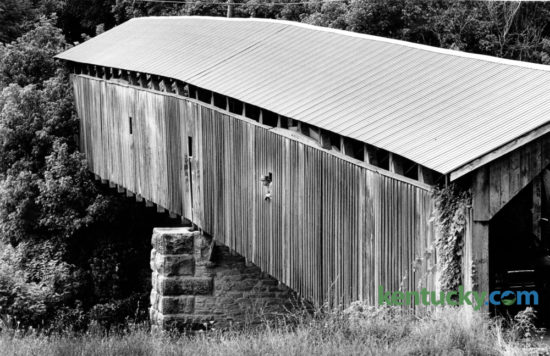
James Bunch leaned out a window in the of the Mt. Zion covered bridge in Washington County on Aug. 7, 1985. Also called Beech Fork covered bridge because it spans Beech Fork Creek, it’s the longest multi-span bridge in Kentucky at 211 feet. The 1865 bridge is off Ky. 458 on Ky. 55 north of Springfield. The bridge is built of yellow pine and features a Burr arch truss. This is a great arch of wood sandwiched between two king posts and is named for Theodore Burr, who patented the truss design in 1804. The bridge was made obsolete by a new bridge in 1977 and was rehabilitated in 1982 and again in 2016. The bridge is closed to traffic, but you can stroll through it. Click on the image for a closer look. Photo by Ron Garrison | Staff
Penn’s Store, 1983
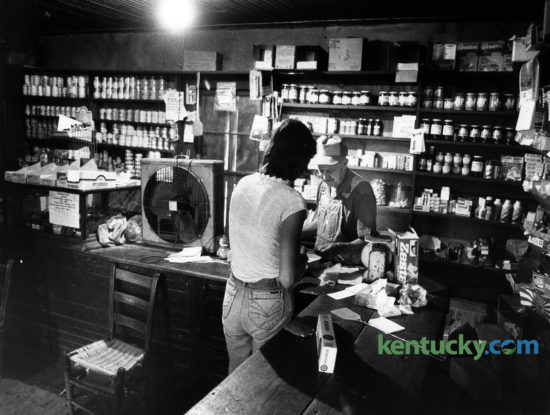
Haskell Penn helped customer Susie Edelen at the counter of Penn’s Store on Sept. 8, 1983, in Gravel Switch. The store, the oldest country store in America being run continuously by the same family, sits on the Boyle and Casey county line. Opened in 1845, it has been in the Penn family since 1850. It was the community’s first post office in 1882. Over the years it has become a popular tourist site for visitors seeking living history. The store remains much as it has been throughout its 170-plus years. The store is listed on the National Registry of Historic Places and is a designated Kentucky Historical Landmark. About the time of this picture, the store had no telephone and used a cigar box as a cash register. Haskell Penn operated the store seven days a week. Even after closing time, Penn, who lived next door, would open up for regular customers who blew their horns. If cars got stuck in the creek, Penn would tow them out with his tractor. There was no restroom in the store. “We have to send them to the closest tree or bush,” Haskell Penn’s niece Jeanne Lane said in 1992. “And in the fall of the year, when the leaves are gone, … well, you can see the problem.” In Oct. 1992, an outhouse was dedicated at an event touted as “The Great Outhouse Blowout”. Today the store is open only on weekends. Photo by David Perry | Staff

